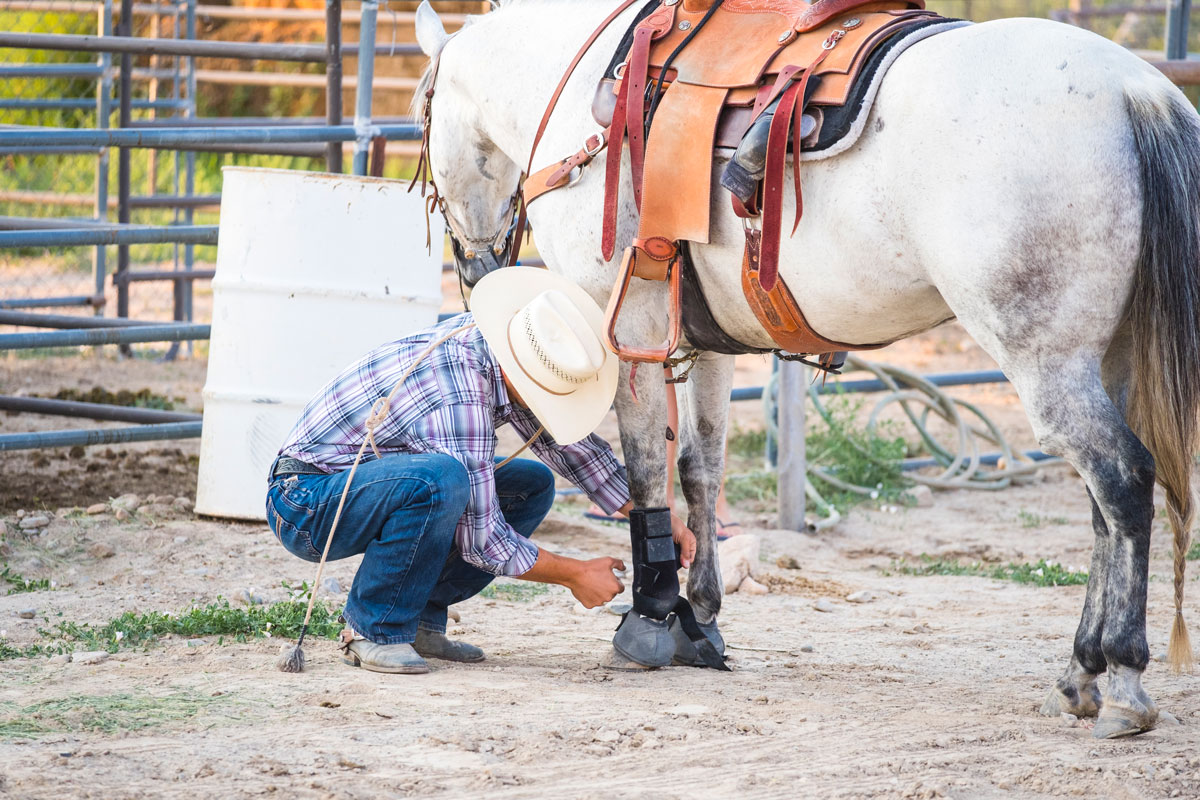
Many equestrians use leg boots or wraps to protect a horse’s limbs from trauma or for cosmetic reasons during exercise. Increased temperatures within leg tissues have been found in previous studies to have detrimental effects on equine tendons. A study tested six boots or wraps in six sound, mature horses before, during and after exercise [Brock, L.; Spooner, H. A comparison among equine boots and leg wraps on leg surface temperature during and after exercise. Journal of Equine Veterinary Science 2021; doi: 101016/j.jevs.2021.103491].
A variety of boots were used: A neoprene boot, a perforated neoprene boot, an alternative neoprene boot, a cross-country boot, a combination of fleece and elastic wrap, and a polo wrap.
One forelimb wore a boot or bandage and the other forelimb was bare to serve as a control. A temperature-reading device was located palmar to the midpoint of the lateral splint bone on all limbs, with recordings every minute for 20 minutes of exercise and 180 minutes for recovery at a standing position in moderate ambient conditions.
The results:
- The bare limb temperature was the lowest (~81 degrees Fahrenheit) at minute 9 of exercise, then peaked and plateaued during recovery.
- Booted/wrapped limb temperature increased during exercise from 90 degrees Fahrenheit at the start of exercise to 97 degrees Fahrenheit at 15 minutes. Temperature plateaued during recovery.
- All booted/wrapped limbs had higher temperatures at all times compared to the bare limb.
- The polo wrap was hotter than the alternative neoprene boot, but all boots had similar findings.
- Humidity was highest under the polo wrap, at 94%.
- All booted/wrapped legs failed to return to baseline temperature and humidity after 180 minutes.
- All control limbs failed to return to baseline temperature within 180 minutes of recovery.
In conclusion the authors stated: “Convection cooling is impaired by boots and wraps during exercise such that even in a moderate intensity exercise bout in moderate ambient conditions, a booted or wrapped limb may reach damaging temperatures.”
They also note that the bare limb also did not return to baseline temperature within 180 minutes of recovery, so it might be necessary for riders to implement other limb cooling strategies.




